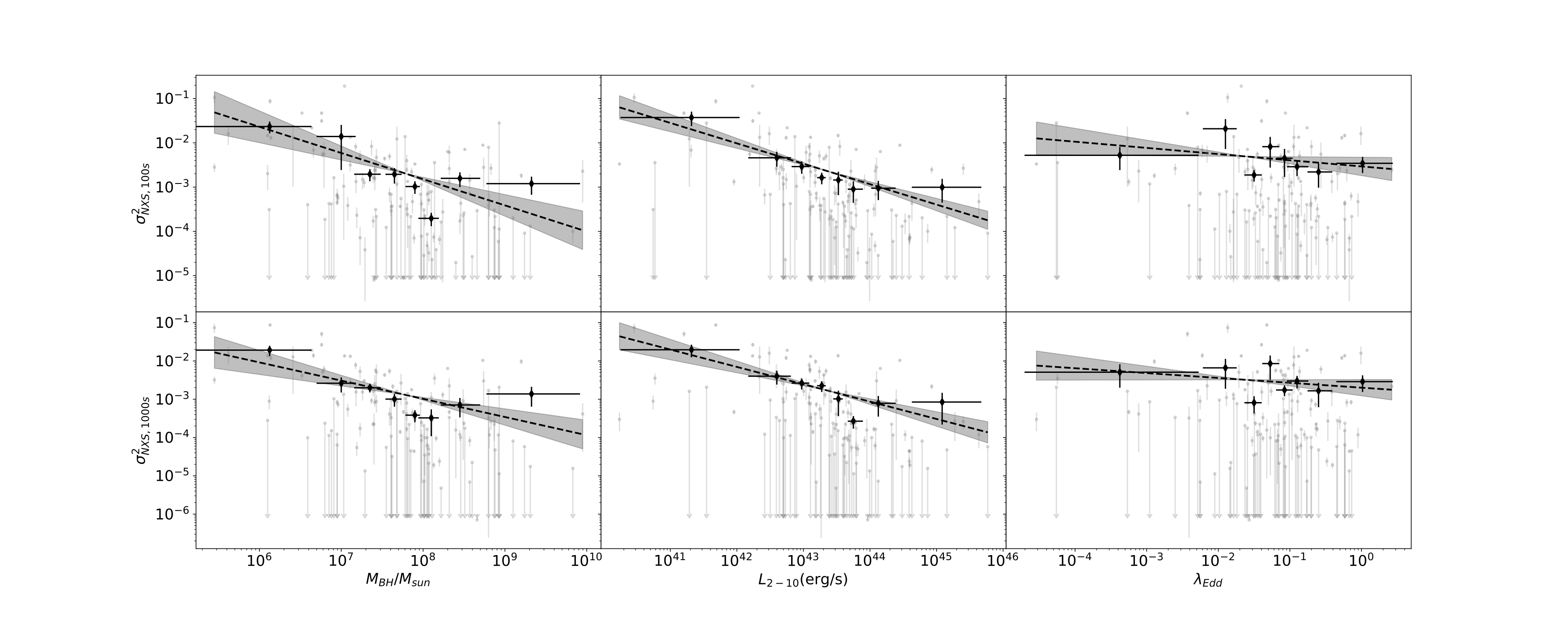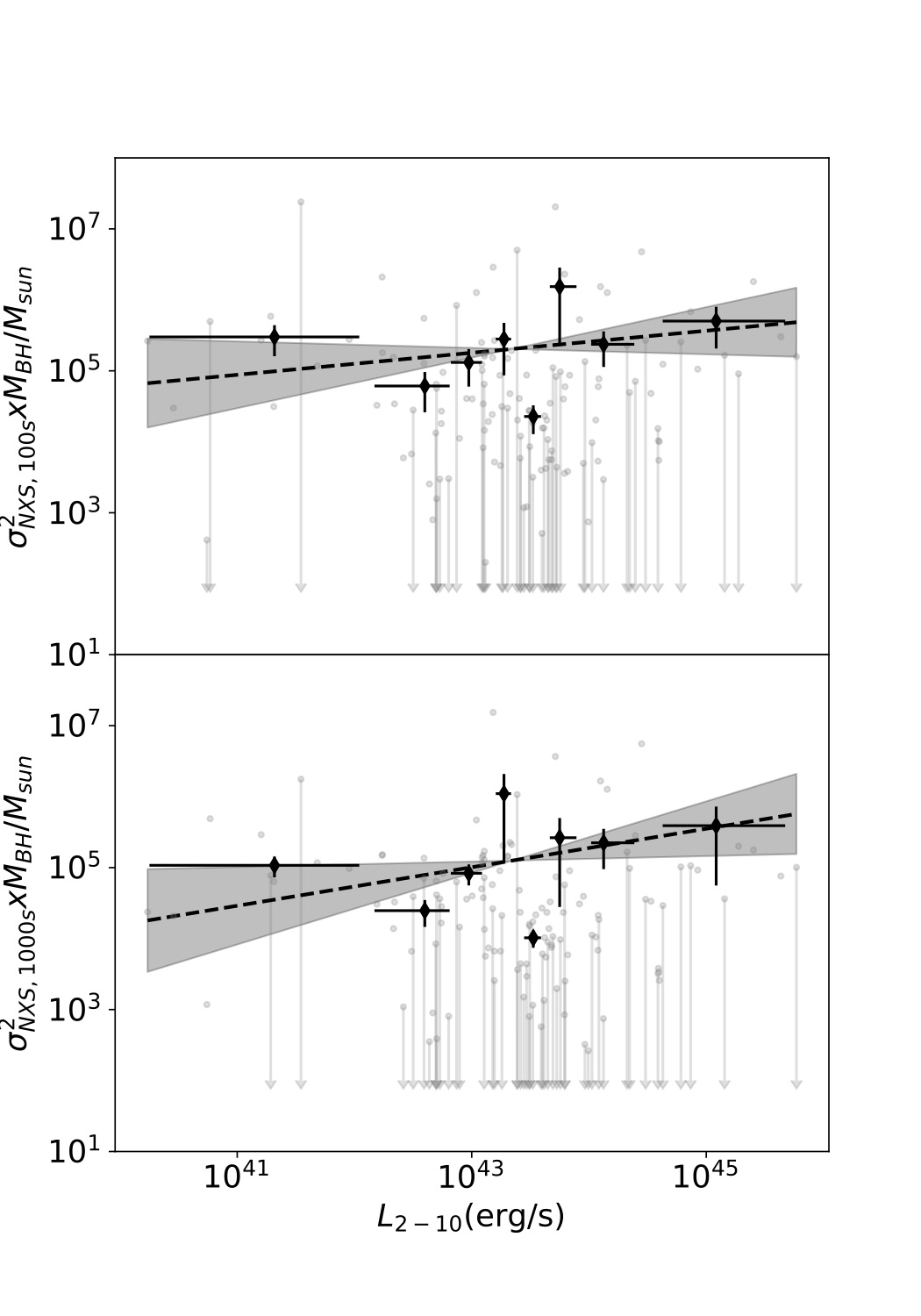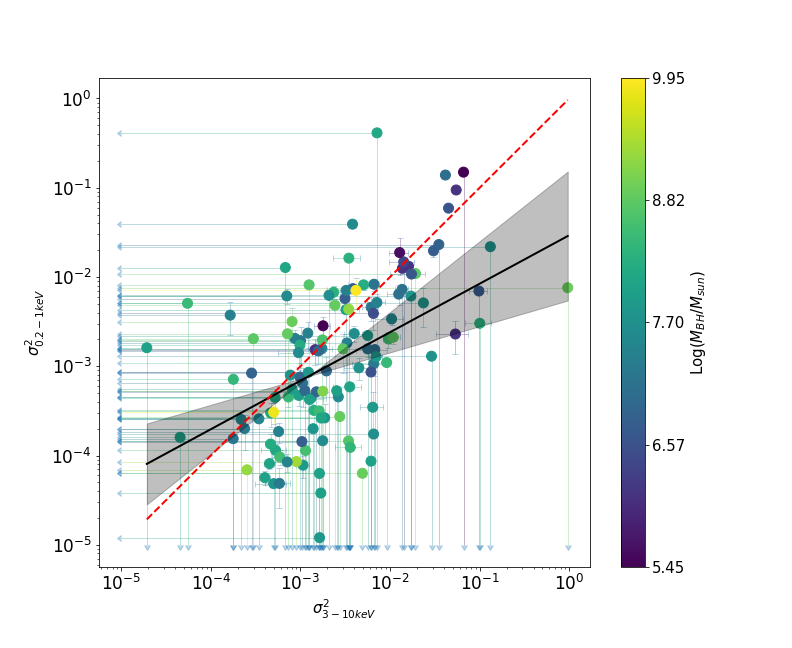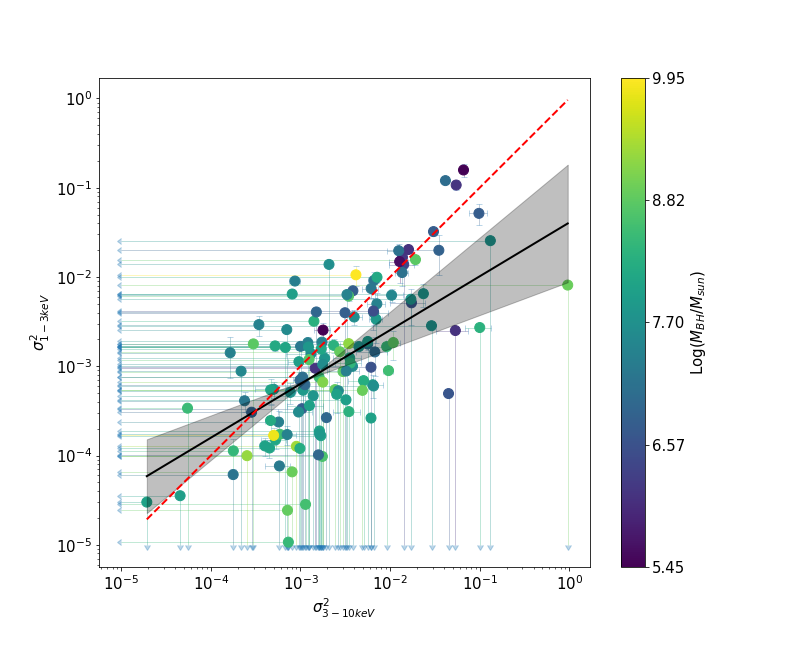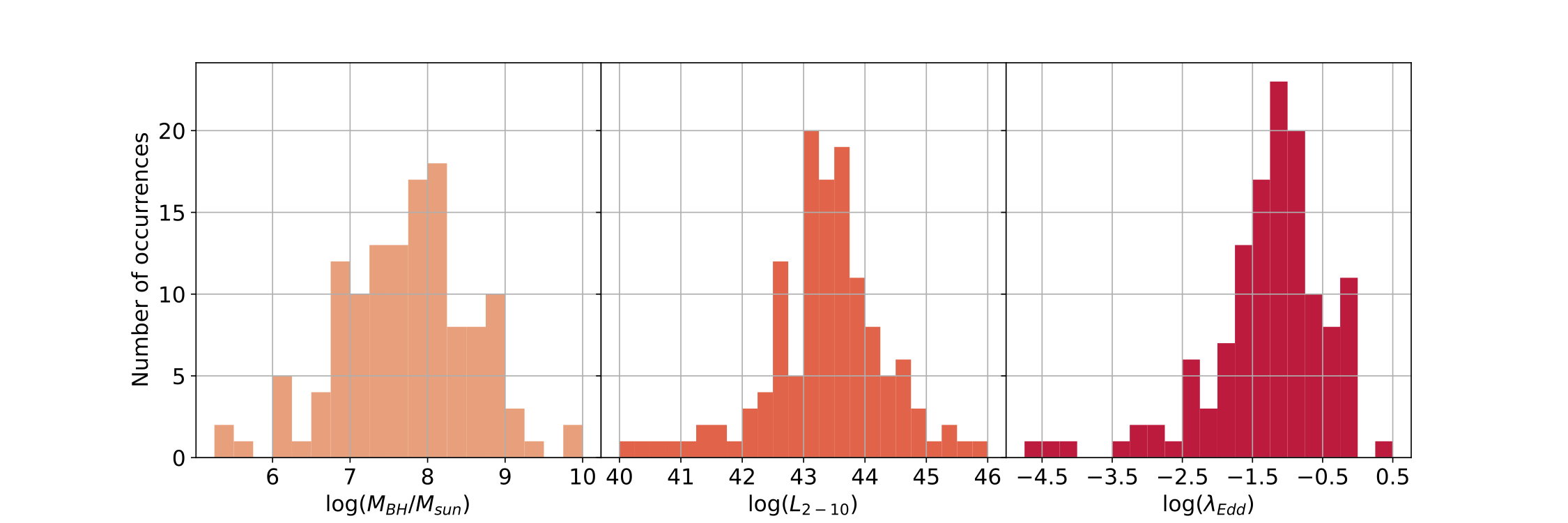The normalised excess variance (σ2NXS, Vaughan et al., 2003) is a quantity used to describe the variability amplitude. It is defined as the difference between the total variance of the light curve, i.e. the integral of the power spectral density (PSD) between two frequencies (S2), and the mean squared error (σ2mean) that is normalised for the average of the N flux measurements squared.
Even if the normalised excess variance does not contain the same amount of information as the PSD analysis, it can be used to confirm the PSD results in large datasets and can also allow the discovery of new correlations between the X-ray variability amplitude and other AGN physical parameters.


